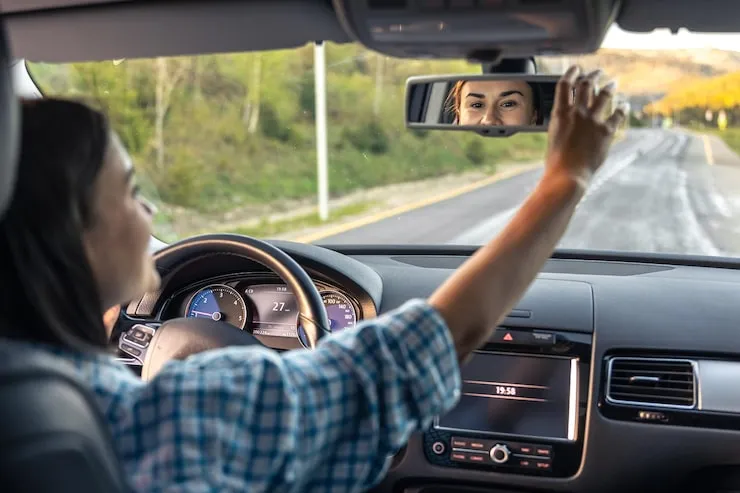Many senior people are able to drive safely well into their 80s or even later.However, it's critical that older drivers—and the people who look after them—evaluate their requirements to keep them safe while they're on the road since a variety of physical conditions associated with aging may interfere with safe driving.
Tips and resources for safe older drivers
- Seat belts save lives
Buckle up before starting the car—every single time. If your seatbelt is uncomfortable, adjust the shoulder mount or buy a shoulder pad that slips over the belt. - Mute your cell phone
Talking or texting while driving distracts you from the road and other vehicles. Leave your cell phone on silent, and do not answer it while you’re driving. - Do not eat while driving
Eating can also distract you while driving. If you must eat or drink, pull into a safe area such as a parking lot and finish all refreshments before getting back on the road. - Do not drink and drive
As people age, their ability to process alcohol may change. Even one cocktail or a glass of wine or beer may make older drivers unsafe on the road, especially when mixed with different medications. - Limit distractions
Listening to music or audio books or even chatting with your passengers can distract some older drivers. If you’re among them, turn off the sound and avoid having conversations with others in the car. - Watch the road
Make sure there is always enough space between your car and the cars in front of you. Also, maintain a safe distance from traffic behind you. - Drive during daylight as much as possible
Older adults, even those with good vision, can experience visual problems at night. General darkness and glare from oncoming headlights make it more difficult to see. - Avoid driving in bad weather
Rain, snow, fog and other hazardous conditions can be especially dangerous for older drivers. Let the bad weather clear before you get on the road. If you must travel, use public transportation or a car service. - Choose safer routes
Try to avoid highways that have ramps, which can be dangerous for older drivers. Also making left turns on highways or busy roads. It’s better to go a little out of your way to avoid difficult intersections and turns. - Try to drive when there's less traffic
Peak rush hour traffic can be stressful for all drivers, but particularly for older drivers. Try to limit driving to those times when traffic is lighter. - Stressed or tired?
Stay where you are until you’re well rested and calm. Driving when you’re not at your best can be dangerous. - Know your medications
Some medications can make you feel drowsy and less alert than usual, or can affect reaction time and other attention issues. Some prescriptions may warn against driving while taking the medication. Review your medications with your primary care provider or a pharmacist to see if your medication(s) could lead to unsafe driving. - Consult a driving rehabilitation specialist
These professionals are trained to evaluate older drivers for the following issues:- Muscle strength, flexibility, and range of motion
- Coordination and reaction time
- Judgment and decision-making skills
- Ability to drive with specialized, adaptive devices
After the evaluation, the specialist may recommend ways for you to drive more safely. Suggestions may include special equipment or training. You can find a specialist on the Association for Driver Rehabilitation Specialists website.
Investigate the CarFit program
CarFit is an educational program sponsored by the AAA, AARP Driver Safety, and AOTA (American Occupational Therapy Association). At a CarFit event, health professionals and experts who specialize in helping older drivers will work with you to make sure your car is properly adjusted for your safety. A CarFit exam takes about 20 minutes to complete. Find a CarFit program near you here.
New vehicle technologies
Recently, the American Automobile Association (AAA) and the University of Michigan Transportation Research Institute (UMTRI) looked at 16 new vehicle technologies. They found that these six features helped to reduce crashes and make driving less stressful for older adults.
- Forward collision warning
These systems, which are available in many newer cars, can warn you if you’re about to have a crash. When a potential collision is detected, the car automatically applies the brakes. The AAA/UMTRI study suggested that this technology might improve reaction times and reduce crashes by up to 20%. - Automatic crash notification
Some cars are equipped with communication technology. In case of a crash -- typically one that triggers airbags to go off --the car signals emergency services that you’ve been involved in a crash. Emergency services can be notified about the crash without anyone having to call 911. - Parking assist with rear-view display
Back-up cameras allow drivers to clearly see what’s behind them as they back up. This makes parking easier. Some cars are also equipped with an obstacle-detection warning system, which will notify you if you’re about to hit something. - Self-parking systems
Some cars have technology that takes over steering while the car parallel parks itself. - Navigation assistance
According to the study, turn-by-turn GPS systems make older drivers feel safer, more confident, and more relaxed while driving. However, some of these systems may be distracting and difficult to use. Make sure to choose one that is easy for you to use.
.png)










